The name BTS (방탄소년단) has, over the last few years, essentially become a household name not just in Korea, but in countries all over the world. As Hallyu (한류), or the Korean Wave, continues to gain momentum, Korean culture and history has begun to spread to all corners of the world not just within the classroom, but in individuals’ homes as individuals take in diverse forms of content that show the Republic of Korea and its culture in all its beauty and richness.
One music group that is taking a lead role in this spread of cultural awareness is BTS. The seven-member group, through their music, stage performances, music videos, and interviews, have used their popularity to draw attention to their Korean heritage, not shying away from displaying the pride they hold in their country and their culture. From wearing modern hanbok in a stage performance on the American late night talk show The Tonight Show Starring Jimmy Fallon, to incorporating an entire traditional performance that included samulnori (사물놀이), a traditional fan dance (부채춤), a traditional mask dance (탈춤), and bukchum (북춤), a dance that is performed while playing the drums, BTS has never backed down from the chance to display traditional Korean culture. Within just a seven-minute stage performance, BTS managed to display a plethora of traditional Korean music styles and performances that would be viewed by fans all around the world.
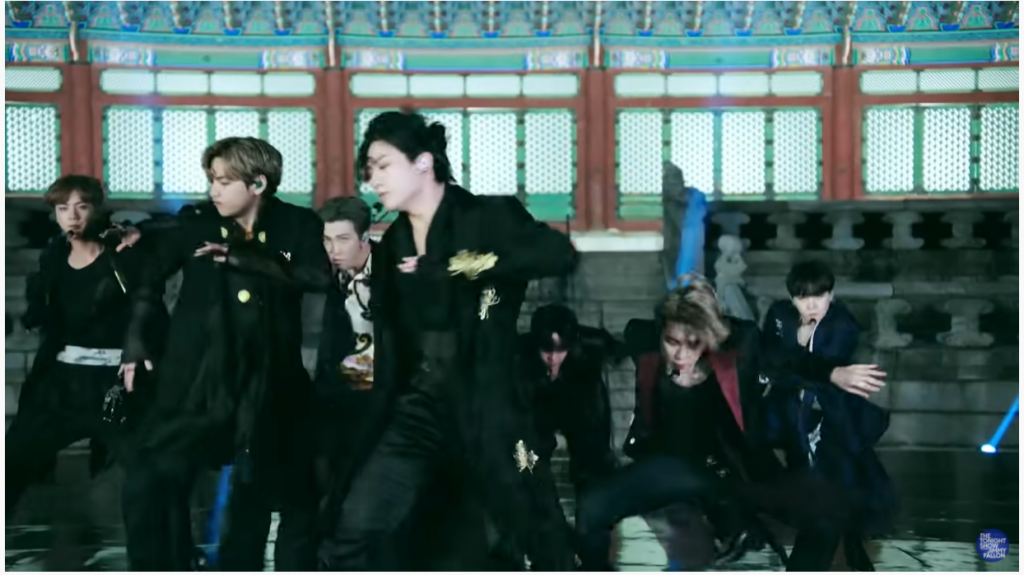
BTS performing their hit song “Idol” on The Tonight Show Starring Jimmy Fallon in front of Gyeongbokgung Palace while donning modern hanbok
Adding yet another dimension to this incorporation of Korean history and culture, both modern and traditional, to modern-day music performances, BTS member Suga, under the second pseudonym Agust D, released a song and corresponding music video titled “Daechwita” as part of his 2020 solo project mixtape. The song is one-hundred percent rap and hip-hop, with fast-paced lyrics layered atop a trap beat that exude a fiery and almost aggressive energy. But below all of the modern elements, the sounds of traditional Korean instruments is unmistakable, with the ringing of a gong sounding out every eight count combined with the blares of a traditional oboe-like wind instrument constructing a solid backbone for the entire song.
The song itself is one thing worth analyzing, but there are also the carefully placed details in the music video that are more than worth delving into. From the backdrop to the clothing, there are centuries of Korean history portrayed in just under five minutes that deserve in-depth explanations in order to be truly appreciated.
Even if you have never heard “Daechwita,” the following information and explanation may be of great interest to you, especially if you wish to learn just a bit more about Korean history or traditional Korean music.
Daechwita (대취타)
Daechwita (대취타, 大吹打) is a style of military music that was performed during the Joseon Dynasty (1392 – 1910). The word daechwita is constructed of the roots de- (대), meaning “large”, and chwita (취타), meaning “wind and percussion instruments.” Therefore, daechwita is a musical performance that utilizes both wind and percussion instruments and is made up of a vast number of performers. Daechwita falls under the larger musical category of chwita (취타), or military music, which can then be divided into daechwita and sochwita (소취타), the latter being a smaller scale version of daechwita that contains less genres of instruments and is performed for different occasions.
Daechwita was mainly performed when the main gate to the camp the military used was opened and closed, when the military would march out or come back to the palace victorious from whatever battle or conflict arose, and when the king would leave the palace on official business. While the monarchy of the Joseon Dynasty as well as the military from that time are no longer present, daechwita is still performed today, and has been played when leaders of foreign countries have arrived in the Republic of Korea.
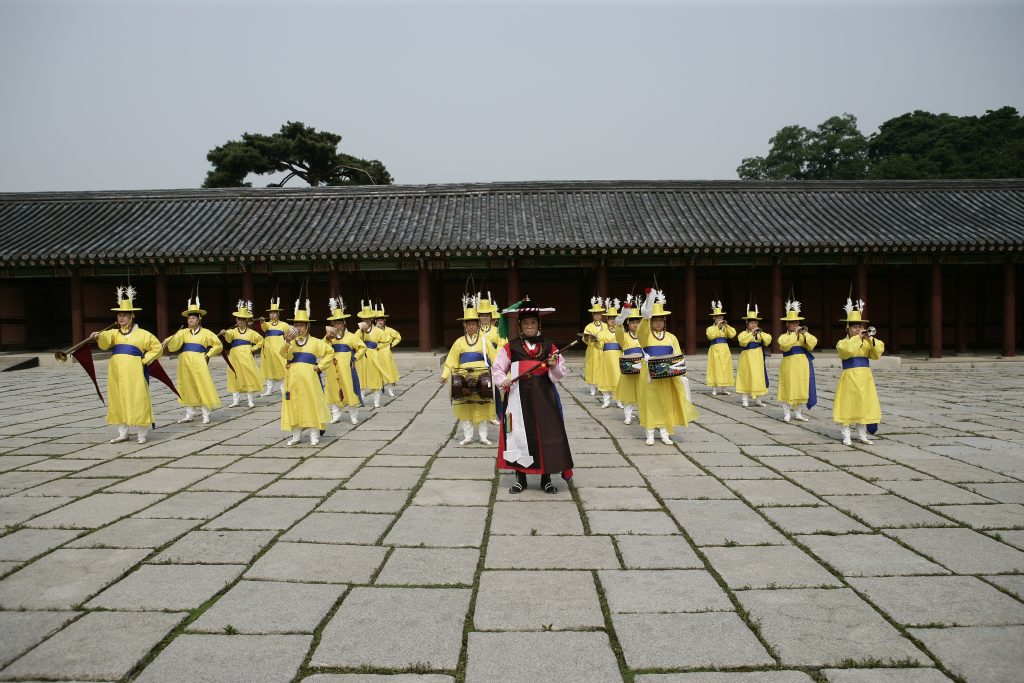
A performance of daechwita in Changdeokgung Palace, 2006
During the Joseon Dynasty, the number of people who constituted one performance group could reach up to nearly five hundred, truly living up to the name daechwita. Nowadays, most performance groups consist of only around fifty people at most.
The list of instruments used is rather extensive and has naturally changed with the passing of time.The modern performances of daechwita utilize the following instruments:
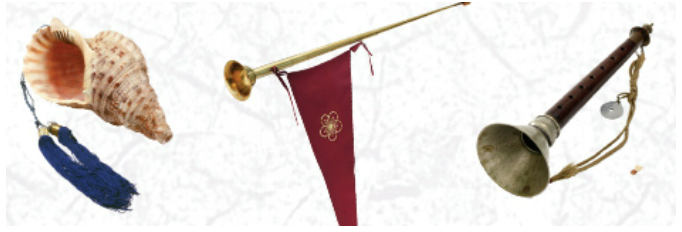
The wind instruments used in modern-day performances of daechwita (nagak, nabal, taepyeongso)
Wind instruments:
- nagak (나각) – a seashell horn
- nabal (나발) – a long metal trumpet
- taepyeongso (태평소) – a conical oboe with a wooden body and a metal bell

Three of the main percussion instruments played in daechwita (jing, yongo, jabara)
Percussion Instruments:
- jing (징) – a large gong
- jangu (장구) – a double-headed hourglass-shaped drum
- buk (북) – a barrel drum that is more commonly seen in performances of pansori (판소리) and samulnori (사물놀이)
- jabara (자바라) – a pair of large brass cymbals
- yongo (용고) – a barrel drum with a dragon painted on its shell
Amongst these instruments, the taepyeongso is the only instrument that is able to change pitch, and thus creates the melody within daechwita. Opposite of that, the nagak and nabal can only produce one pitch, and thus act as the backbone for the performance, playing long and drawn out low tones that contrast sharply against the high pitched taepyeongso.
The slow and regal sound of daechwita can be heard in the very beginning of Agust D’s song. The drawn out tones of the nabal and nagak, the high-pitched cries of the taepyeongso, and the steady beating of the yongo, buk, and jangu create a chilling introduction that quickly moves on to blend in with a more modern beat. On top of all of this is a man’s voice, shouting the phrase “Hit the gong once and then begin daechwita!” (명금일하대취타 하랍신다), appropriately followed by the striking sound of the jing. This is an accurate representation of a very crucial part in the daechwita performance, where the leader of the group declares the beginning of the performance by shouting this phrase. A similar action is done to signal the end of the performance, with the leader shouting “Stop the music!” (헌화금 / 허라금) and drawing the performance to a close. In Agust D’s “Daechwita,” the signal to stop the music is never given, and thus the song ends on a rather unfinished note, almost sounding as though it is being cut off right in the middle.
While the song itself is entitled “Daechwita,” aside from the introduction, there is very little within the main body of the song that resembles the traditional sound of daechwita. The most notable difference is the use of instruments that are not performed in daechwita. Specifically, after the jing is struck to signal the beginning of the song, the sounds of the ggwaengwari (꽹과리), a small brass gong, as well as a the fast pluckings of a harp-like instrument are suddenly introduced along with a dramatic change in tempo to something that is much faster than anything one would hear in a traditional daechwita performance. However, the ringing of the jing and the rather sporadic melody of the taepyeongso are maintained throughout the song and, even though they are being played outside of their usual context, they serve as a reminder to listeners about the traditional sounds of daechwita.
Hanbok (한복)
Alongside the song itself, a music video was also produced that follows the story of a corrupt king and the rebel who is working to overthrow him. While this is not a portrayal of any real historical event that took place in the Republic of Korea, the costumes donned by the singer as well as the music video set actually are reflections of real historical Korean landmarks and artifacts.
First, there is the black hanbok that the king wears throughout the music video. Many people may be familiar with the sight of the red and gold embroidered hanbok that is a clear sign of royalty, but a nearly identical style of hanbok made in black may be a new sight. While they may look similar, the two pieces of clothing play different roles and carry different meanings. The red hanbok is the hanbok of the king, while the black hanbok is worn by the king’s son, the prince. Aside from the color, there is also a difference in the dragons that are depicted on each piece. While the king’s hanbok shows the image of a dragon with five talons, the dragon on the crown prince’s hanbok only has four. These hanboks are thus rightfully named “five-toed dragon sewing” (오조룡보) and “four-toed dragon sewing” (사조룡보).
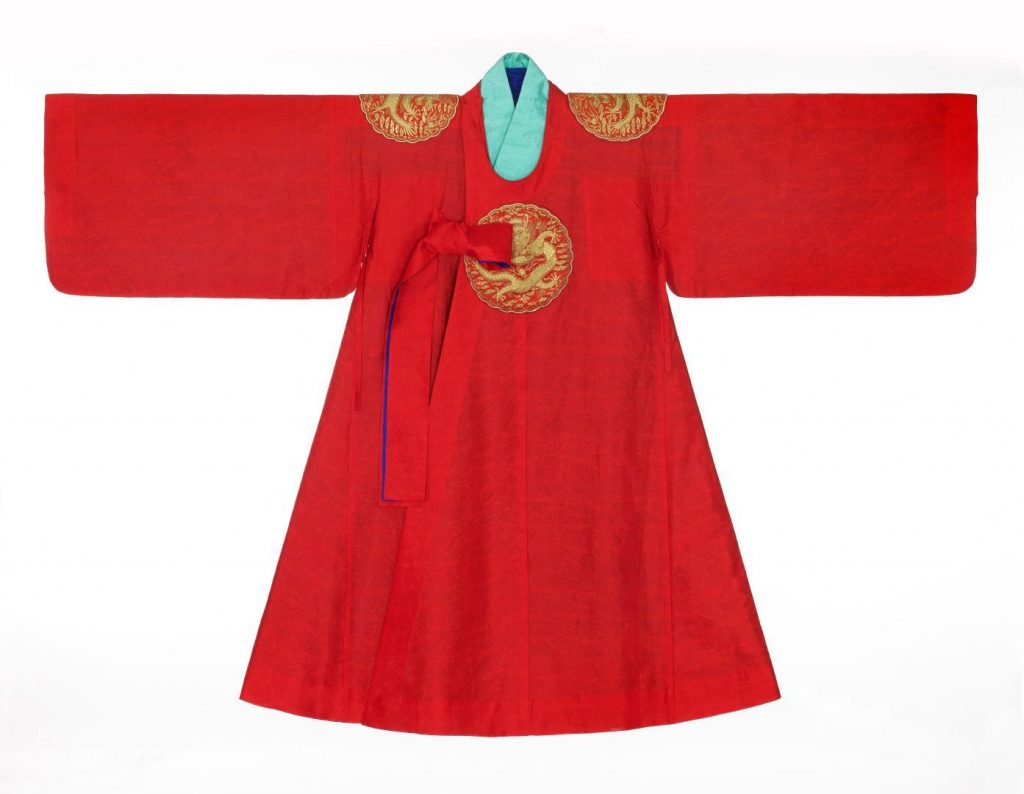
The red hanbok worn by the king with the five-taloned dragon embroidered on the chest and shoulders
If the color of the hanbok in the music video was not a big enough giveaway, upon closer inspection it can actually be seen that the dragons embroidered on the king’s hanbok do, in fact, only have four toes. So, whilst he is playing the role of the king, August D’s character is wearing the hanbok of the crown prince.
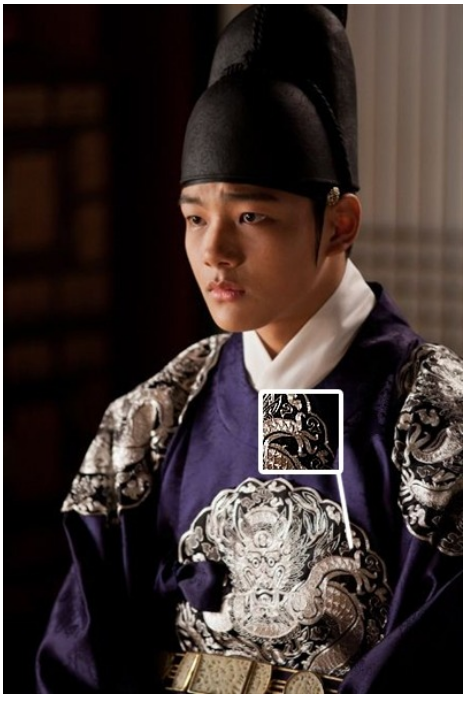
The appearance of the four-taloned dragon pattern on black hanbok in the drama “The Moon Embracing the Sun” (해를 품은 달)
Of course, the importance of aesthetics should not be overlooked. While he may not be wearing the proper hanbok in terms of historical context, one can only assume that the choice of costume was based more so on creating the desired menacing and ruthless atmosphere around the fictional character. There were also no blonde monarchs in Korean history, so it is probably best to take the historical representations in this music video with a grain of salt.
Yongin Daejanggeum Park (용인대장금파크)
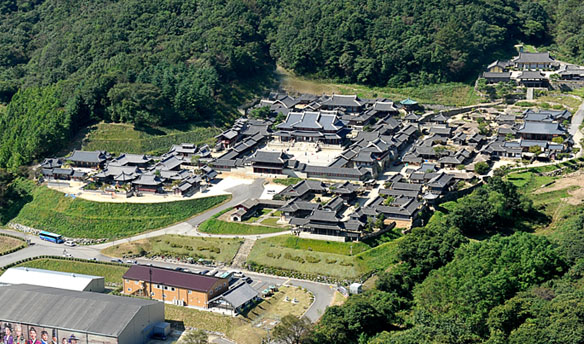
The “Daechwita” music video was filmed at Yongin Daejanggeum Park, a set that is open to the public and has been the backdrop to more than a few Korean historical dramas.The park contains buildings constructed in architectural styles from all different time periods in Korean history, including the period of the Three Kingdoms (삼국시대), the Goryeo Dynasty (고려시대), and the Joseon Dynasty (조선시대). While the park consists of many different sections featuring buildings with a multitude of purposes, three main sets made their way into the “Daechwita” music video.
Injeongjeon Hall (인정전): The palace that appears in the music video is meant to be a replica of Injeongjeon Hall, which is one of the main buildings within Changdeokgung Palace (창덕궁). This was the site where many ceremonies were performed, including the king’s coronation and the reception of foreign envoys. The inside of Injeongjeon Hall is also shown in the music video, and this is where the king’s throne can be found. Behind the throne, to those with a keen eye (that is not solely trained on the singer in question), there can be found a mural that depicts the sun and moon and five green mountains. This portrait is called ilwolobongdo (일월오봉도), or “Sun and Moon and Five Peaks.” While it may seem like just another piece of pretty decor, this mural is actually of great significance and can be found behind the thrones of the palaces from the Joseon Dynasty.
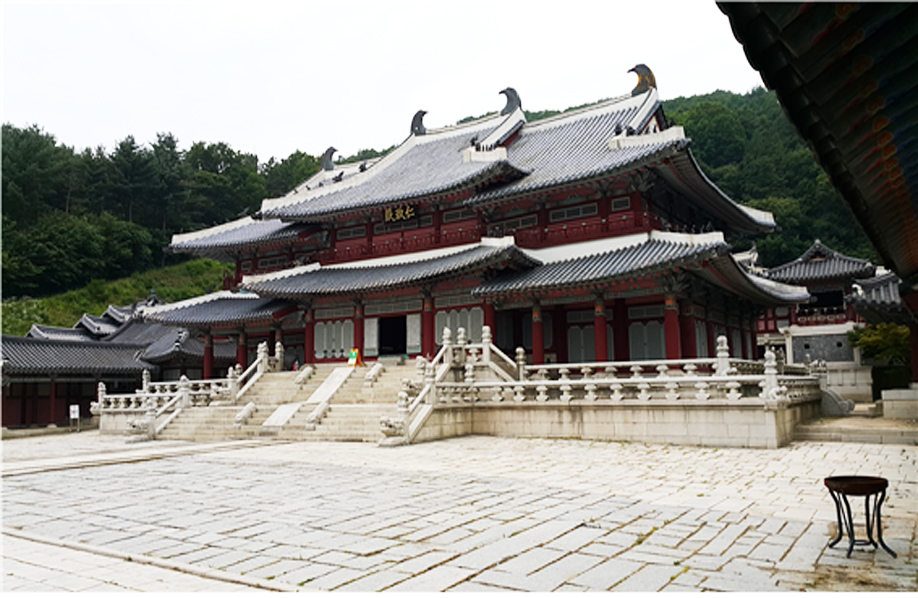
Yongin Daejanggeum Park’s Injeongjeon
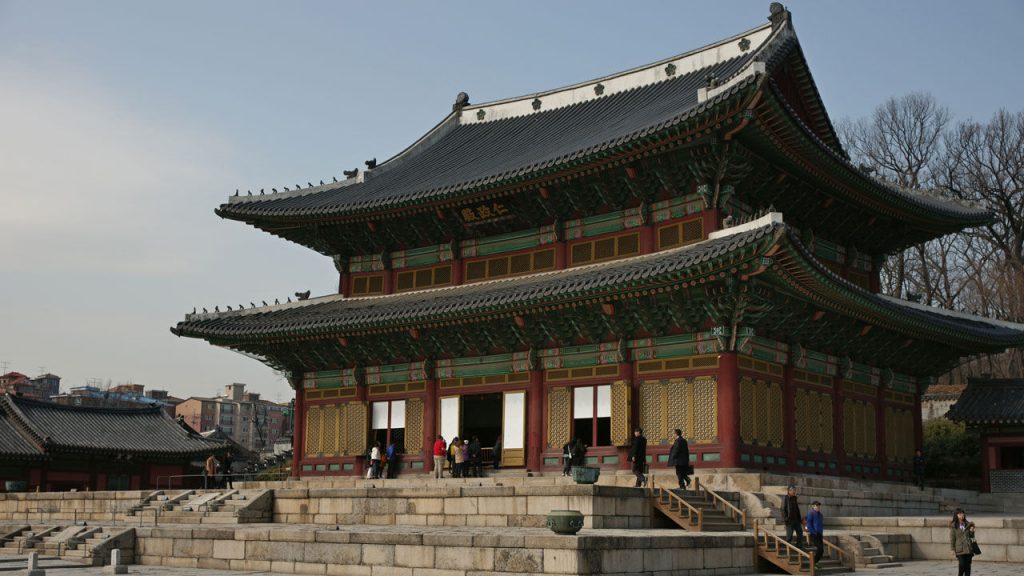
the real Injeongjeon Hall at Changdeokgung Palace
While the size and frames of each individual painting may differ slightly, the elements of each painting are consistent throughout each palace. These elements include five peaks, the tallest being located in the center with two smaller peaks on each side. The smaller peaks represent the four cardinal directions and the tallest peak represents the center, combining to symbolize all of Korea’s land. The sun is always drawn above the rightmost smaller peaks and the moon is directly across on the left, representing the king and queen respectively. They keep a vigilant watch over the land below them. The mountains, waterfalls and trees symbolize their kingdom and their people, and the painting can be seen as a physical manifestation of the responsibility the king and queen have to protect their country and their subjects.
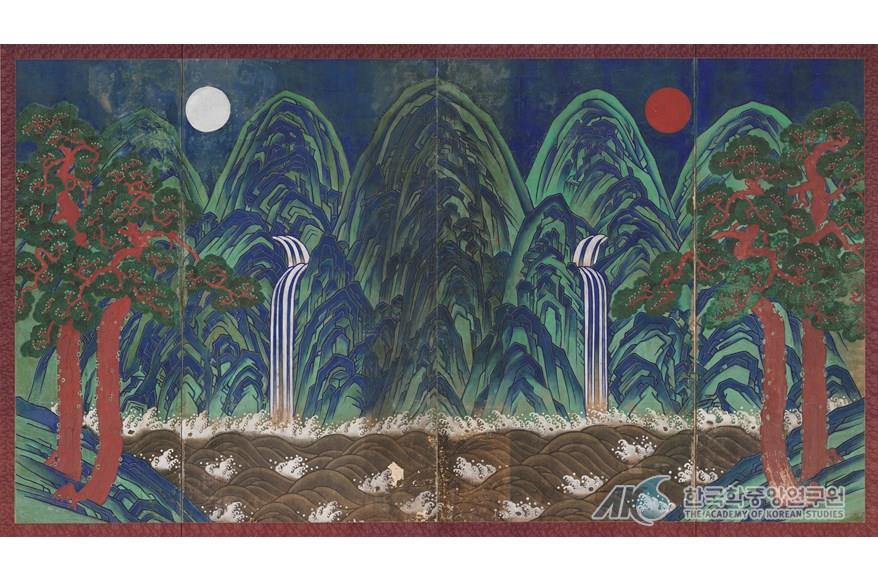
“Sun and Moon and Five Peaks”
While the “Sun and Moon and Five Peaks” portrait is not something one needs to know when watching the music video, its significance should not go by completely ignored. Even the most trivial details can give great insight into the history and culture of a nation, and this painting serves as one such example of the power small details hold.
Traditional Marketplace: Just as the name suggests, this part of the filming set was built to replicate the traditional marketplaces of the past, where vendors would come to sell goods of all kinds. This particular market includes a linen shop, tavern, pottery store, and a butcher shop among other things.
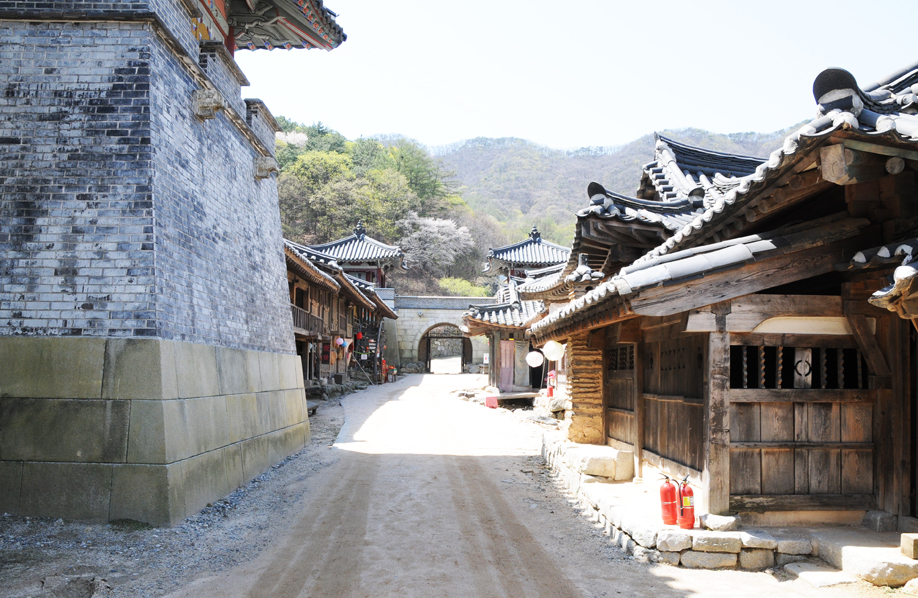
Traditional Marketplace 1
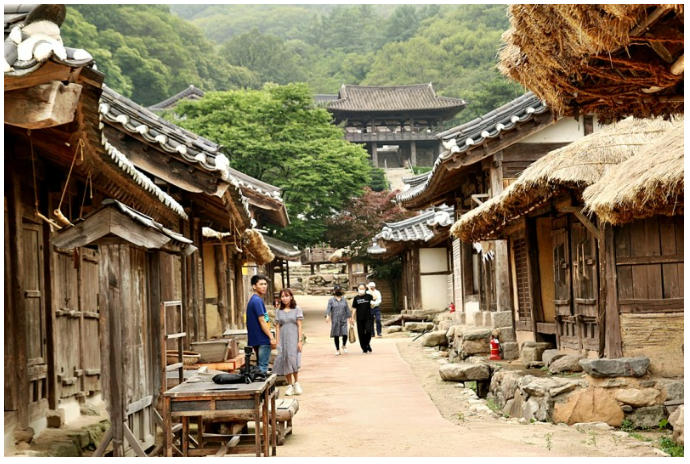
Traditional Marketplace 2
Hwagidogam (Gunpowder Weapon Center) (화기도감): This was a government office instilled during the Joseon dynasty to produce gunpowder in response to the Japanese invasion of Korea in 1592. It was operated until 1615, after which it did not have any major use.
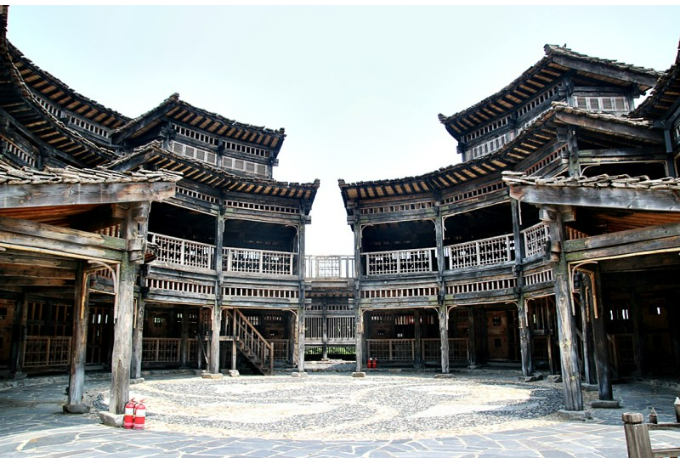
Hwagidogam (Gunpowder Weapon Center) (화기도감) 1
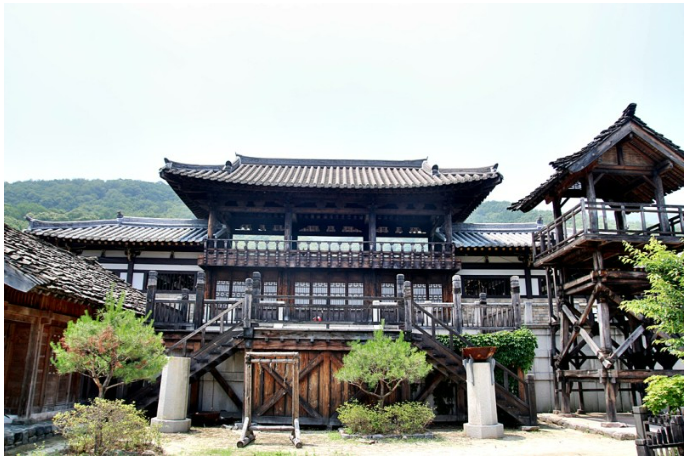
Hwagidogam (Gunpowder Weapon Center) (화기도감) 2
Tourney Hall (연무장): This space is where warriors would train and has made an appearance in many dramas for these training and battle scenes.
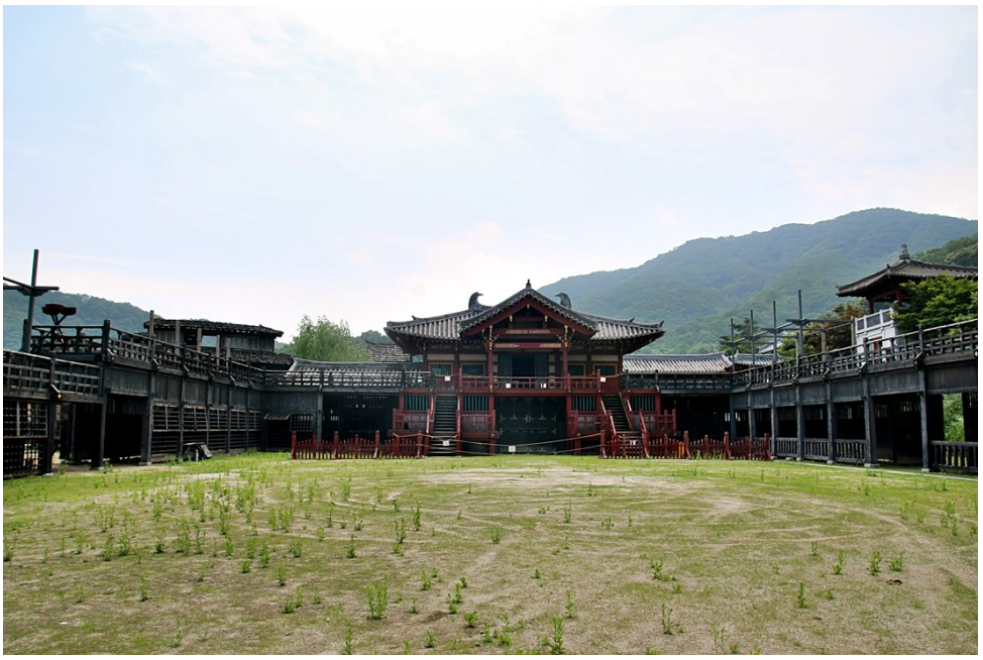
Tourney Hall (연무장) 1
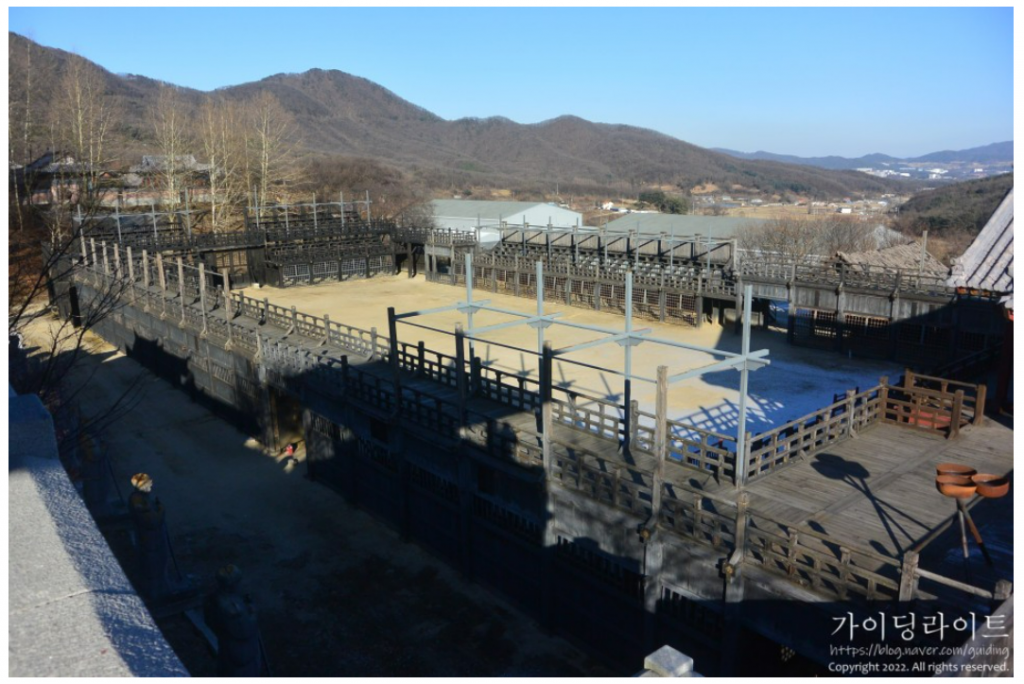
Tourney Hall (연무장) 2
This music video and song do a superb job of blending modern and traditional elements, but knowing the specific elements in detail and being able to pick them apart and analyze them makes the listening and viewing experience that much more meaningful. If you were to simply listen to Agust D’s “Daechwita” without knowing how an actual daechwita performance is meant to sound, it is fairly easy to miss some of those traditional instrumentals that the artist layered so very carefully. However, once you take the time to look into not only the modern interpretation but the traditional style as well, it incites a whole new perspective and leads to many more interesting questions;
- Why did the artist choose daechwita out of all traditional music performances?
- How did the artist go about picking which traditional instrumentals to utilize in a hip-hop song?
- To what degree did the artist choose to maintain the original sound of daechwita, if at all, and why?
The same can be said about the music video. To anyone who may have just stumbled upon this video, it is easy to simply note how there are very modern elements thrown in on top of an old-timey backdrop. Things like the people’s clothing (street style vs. hanbok), the very obvious appearance of a Hyundai Grandeur Azera in the Joseon era, and the stark contrast between the uses of guns and swords are elements that anyone can easily pick out. But in order to truly understand these directing choices, as I hold the personal belief that things are chosen with intention, it is helpful to really dive into the history and backstory of certain things. For example, the choice of the artist to don the black hanbok instead of the traditional red can possibly be boiled down simply to an aesthetic choice, as there is a clear difference between the two hanboks and the roles they played. Furthermore, there have been some other analyses that claim the “Sun and Moon and Five Peaks” portrait is meant to represent the king and the rebel in this music video, when in fact, if one were to simply do a quick search, it is a mural that had a much greater significance throughout the Joseon Dynasty. It certainly was not created just for this one video.
Songs and music videos like “Daechwita” are not only an excellent way for artists to showcase their culture and its many diverse and beautiful elements in their entirety, but is also a way for people around the world to learn a thing or two about a culture and history that may seem completely foreign to them. This of course is not saying that in order to truly understand Korean culture one must know the complete history of daechwita, but is rather broadcasting a grander message in saying that it truly is the small details that make up a nation’s collective culture and history. However trivial some details may seem, everything serves its own purpose and works to contribute to the grander picture we have dubbed “culture .”
Written by : Allison Garbacz
From Illinois, United States. Current 5th-year undergraduate at the University of Wisconsin-Madison, B.A. Candidate for Linguistics, B.A. Candidate for Asian Languages and Cultural Studies, Exchange student at Korea University, Intern at VANK (Voluntary Agency Network of Korea)